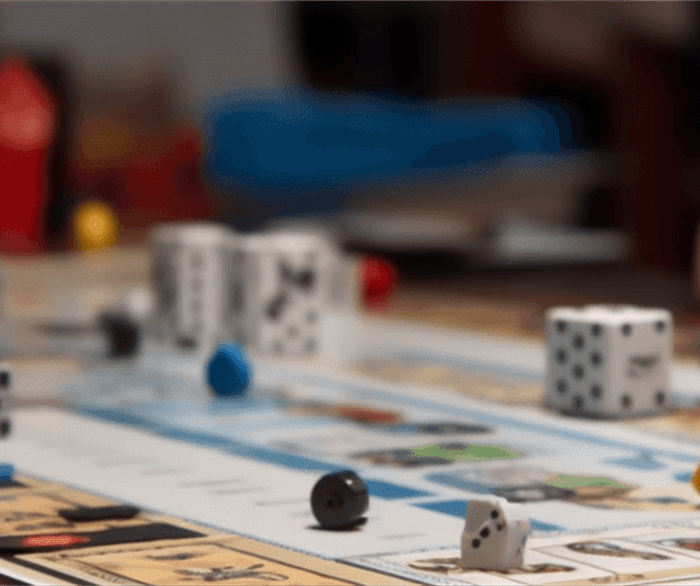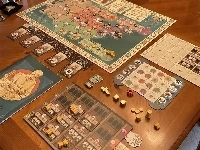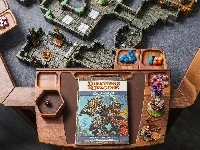Designing an awesome board game requires a combination of creativity, careful planning, and attention to detail. While every game is unique, the design process is pretty much the same. Here are some suggestions from SundayGames for designing a great board game workflow:
- Brainstorming: The first step in designing a board game is to come up with ideas for the game. Brainstorming can be done alone or in a group setting, and can involve a wide range of sources of inspiration, including books, movies, video games, and other board games. It’s important to consider both the game’s theme and mechanics during the brainstorming process, as these two elements will work together to create the overall experience of the game.
During the brainstorming process, it can be helpful to create a list of potential themes and mechanics for the game, as well as any specific game goals or objectives. It’s also important to consider the target audience for the game, as this will help guide decisions about the game’s complexity and level of challenge.
- Conceptualization: Once you have a basic idea for the game, it’s time to start fleshing out the concept. This involves creating a rough outline of the game’s mechanics, rules, and components, as well as considering the game’s intended level of complexity and target audience.
During the conceptualization phase, it can be helpful to create a detailed game design document (GDD) that outlines the game’s core mechanics, objectives, and rules. The GDD should also include details about the game’s components, such as the game board, game pieces, and cards.
It’s important to consider the player experience during the conceptualization phase, and to think about how the game’s mechanics and components will work together to create an engaging and immersive experience for players.
- Prototyping: Once you have a rough concept for the game, it’s time to start building a prototype. Prototyping involves creating a basic version of the game using simple materials like paper, cardboard, and other household items. This allows you to test out the game mechanics and make any necessary adjustments before moving on to more advanced prototypes.
During the prototyping phase, it’s important to be open to feedback and to make changes to the game as necessary. Playtesting with friends and family can be helpful during this phase, as it allows you to get a sense of how the game will be received by players.
- Playtesting: Once you have a working prototype of the game, it’s time to start playtesting with a larger group of players. This can be done in person or online, and should involve players from the game’s target audience.
During playtesting, it’s important to observe how players interact with the game and to gather feedback on the game’s mechanics, components, and overall experience. It can be helpful to record playtesting sessions so that you can review the footage later and make note of any issues or areas for improvement.
- Refining: Based on the feedback gathered during playtesting, it’s time to start refining the game. This may involve making adjustments to the game’s mechanics, components, or rules in order to improve the player experience.
It’s important to take a data-driven approach during the refining phase, using feedback and playtesting data to guide decisions about how to improve the game. This may involve simplifying certain elements of the game, adding new components or mechanics, or adjusting the balance of the game.
- Finalization: Once the game is refined, it’s time to start finalizing the game components and artwork. This involves creating high-quality game pieces, designing a game board, and developing illustrations and graphics for the game.
During the finalization phase, it’s important to focus on creating a consistent and visually appealing aesthetic for the game. This may involve hiring a professional graphic designer or artist to help with the design process.
- Crowdfunding:Crowdfunding has become an increasingly popular option for board game designers to obtain production funds. It involves creating a campaign on a crowdfunding platform, such as Kickstarter or Indiegogo, where potential backers can pledge money to support the production of the game in exchange for rewards such as early access to the game, exclusive game components, or other perks.
Launching a crowdfunding campaign before production can be a smart move, as it allows designers to gauge interest in the game and raise the necessary funds to produce it. However, it’s important to have a solid plan in place before launching a campaign. This includes having a clear understanding of the costs involved in production, as well as the amount of money needed to cover these costs.
In order to create a successful crowdfunding campaign, designers need to create a compelling pitch that showcases the unique features of the game and highlights its potential appeal to players. This may involve creating a video trailer, writing engaging copy, and designing eye-catching graphics that grab the attention of potential backers.
Designers should also offer a range of rewards that incentivize backers to pledge at different levels. These rewards should be both attractive and achievable, and should provide backers with a tangible benefit for their support.
Once the campaign is launched, it’s important to keep backers engaged and informed throughout the process. This may involve regular updates on the progress of the campaign, as well as behind-the-scenes looks at the design and production process.
If the campaign is successful and the necessary funds are raised, designers can move forward with the production phase of the process. It’s important to fulfill all rewards promised to backers in a timely and efficient manner, as this helps to build trust and goodwill with the community of supporters.
In summary, crowdfunding can be a useful tool for board game designers to obtain production funds, but it requires careful planning and execution in order to be successful. By creating a compelling campaign, offering attractive rewards, and staying engaged with backers throughout the process, designers can increase the chances of raising the necessary funds to bring their game to market.
- Production: Once the game is fully designed and fully funded, it’s time to start producing the game. This involves creating a final version of the game board, game pieces, and cards, as well as packaging the game for sale.
During the production phase, it’s important to consider the cost of producing the game and to make decisions about pricing and distribution. It’s also important to ensure that the game meets any regulatory requirements for safety and quality.
- Launch: Once the game is produced, it’s time to launch the game to the public. This may involve hosting a launch event, reaching out to reviewers and influencers, and using social media and other marketing channels to promote the game.
During the launch phase, it’s important to monitor feedback from players and reviewers and to make any necessary adjustments to the game based on this feedback.
- Post-Launch Support: After the game is launched, it’s important to continue providing support for the game. This may involve creating expansion packs or additional content for the game, providing customer support for players, and addressing any issues or bugs that arise after launch.
It’s also important to continue promoting the game through marketing and outreach efforts, in order to maintain interest in the game and attract new players over time.
The process of designing a board game involves several key steps, including brainstorming, conceptualization, prototyping, playtesting, refining, finalization, production, launch, and post-launch support. Each of these steps is essential to creating a successful and engaging board game that resonates with players and stands the test of time. Throughout the process, it’s important to remain open to feedback, to prioritize the player experience, and to stay focused on creating a game that is both fun and challenging for players of all skill levels.








